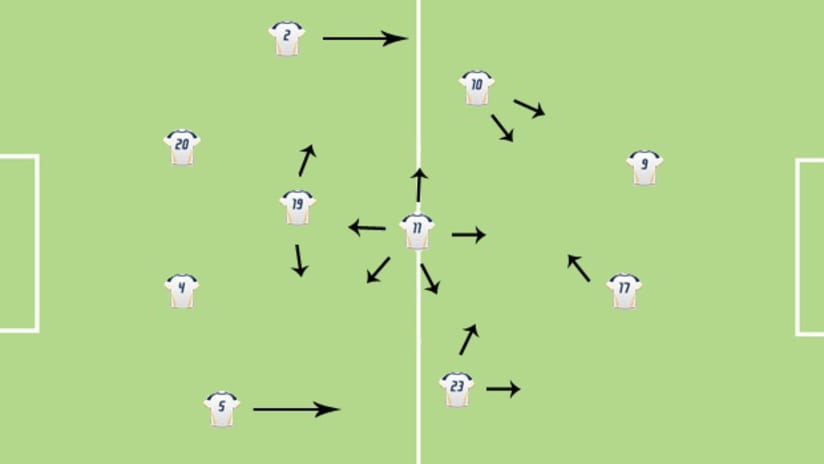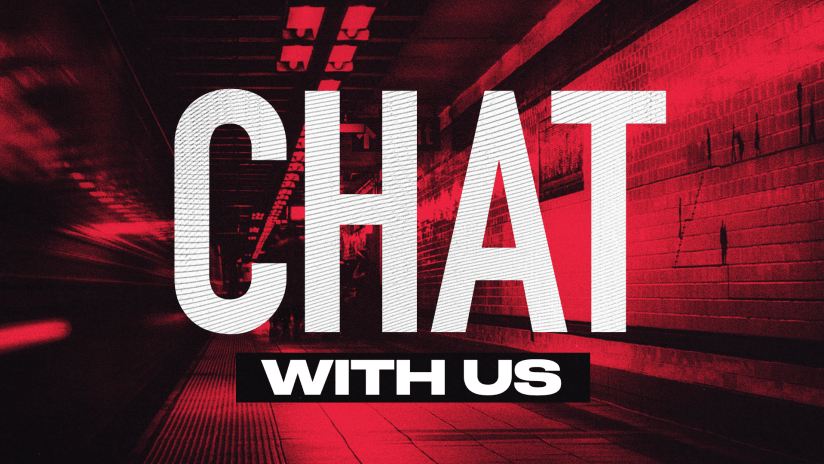What wins for one team will invariably be copied by others. It’s a sports axiom, and will be forever.
Tactically, that means there are a few things to look for this year in MLS.
First, the MLS Cup champion Colorado Rapids’ “funnel-and-press” approach will be the lineup choice du jour. This set-up relies primarily on a few things that the United States is very good at producing, namely midfielders who can run all day and guys who are better off the ball than on it.
The purpose of funnel-and-press is to force high turnovers and convert them immediately into opportunities. Some criticized the Rapids for being a bit inelegant – I’d say pragmatic – but there’s no denying their success. Gary Smith’s club completed the highest percentage of attempted passes (83 percent) of any MLS team last year.
[inlinenode:329434]That’s at least partially because they attempted fewer passes than most other teams, but also because they have Jeff Larentowicz sweeping and distributing in front of his defense. Larentowicz is a master distributor, and balls won by other Rapids players tended to make their way to him so that he could start the break with a long outlet.
And the fact that the other MLS Cup finalist, FC Dallas, used a very similar approach suggests there will be more to follow.
Thus far in the preseason, it looks like the LA Galaxy will be one of the teams to fit the mold. The Galaxy won last year’s Supporters’ Shield and are probably preseason favorites this year, but to a man, I’d wager they were disappointed with nearly everything from August onwards.
Their critical flaw was in the straight 4-4-2 they played, with the central midfield pairing (usually Dema Kovalenko, who’s now retired, and the Brazilian Juninho) taking turns attacking and defending. This lineup asks a lot of the central midfielders – namely that they have an almost telepathic understanding of when the other is going to push into attack – and by the end of the season, it’s clear that the rest of the league had LA figured out. The Galaxy nearly came back to the pack after the league’s best-ever start.
Dallas put an exclamation point on that loss of form with their 3-0 dismantling of LA in the Western Conference Championship.
Thus far in the 2011 preseason, reports suggest Bruce Arena has taken the lesson to heart and is now trotting out a funnel-and-press 4-1-3-2 similar to Colorado. Whether Juninho – talented both technically and tactically, but not the most physically gifted guy – can handle the “1” spot Larentowicz owns so well will be the real test, assuming Arena does, indeed, make the switch.
Over at Real Salt Lake, however, don’t expect a similar conversion. Jason Kreis has stuck to his 4-3-1-2 for years, and the level of success they’ve had suggests no change is necessary.
Like the funnel-and-press, RSL’s more traditional tactics do rely on a lot of running from certain players (fullbacks, a second forward, all three of the more deep-lying midfielders). The difference is that in midfielder Javier Morales, they have a true No. 10 who’s figured out how to translate his talents to the modern game. He’ll sneak from sideline to sideline, cutting between the lines of defense and midfield, and RSL move the ball so quickly and with such coordination that they’re able to give him a steady supply of service.
The New York Red Bulls are, perhaps at this point, the team most dedicated to a possession style the league has seen since the 2001 Miami Fusion. As head coach Hans Backe and Rafa Marquez have been saying to anyone who’ll ask, RBNY are all about possession this year. They want the ball as much as possible, and intend to build from the back, with Márquez and Tim Ream distributing from central defense. They’ve been using a 4-1-3-2, but it’s very different from Colorado’s.
Out in Kansas City, Sporting were the one MLS team in 2010 to consistently go with a 4-3-3. Peter Vermes is committed to that formation again this year, though he admits his club will be a bit more flexible. The advantage of the 4-3-3 is obvious – get more skillful, attack-minded players on the field and have them surge from unexpected angles.
The disadvantage is that turnovers are deadlier than they are to teams playing a 4-4-2, because in the 4-3-3 you push more players higher up the pitch.
Frank Yallop seems to be following Vermes’ lead thus far in preseason, as his San Jose Earthquakes have trotted out a 4-3-3 several times. Yallop being Yallop (quietly the most innovative tactical coach in the league), he’s put his own spin on it by playing last year’s Golden Boot winner, Chris Wondolowski, in central midfield.
Judging by that, I’d expect San Jose’s 4-3-3 to look much different from KC’s, should both teams stick with the lineup. San Jose’s will be more about holding the ball up top and allowing bursting runs from the midfield, while KC’s will be about freeing up the flanks and finding center forward Omar Bravo in the box.
Out in Chicago, the Fire’s Carlos de los Cobos has, at least temporarily, revived Carlos Bilardo’s old 3-5-2. The last teams to effectively play that formation in MLS were D.C. United and the New England Revolution back in the middle of last decade.
[inlinenode:318000]The danger of the 3-5-2 is the amount of space allowed on the flanks and the amount of ground defenders are asked to cover. Brazil’s 4-4-2 with attacking fullbacks – a strategy almost every team in MLS copies from one degree or another – was designed precisely to overwhelm the three-man defenses of Germany, Argentina and England (to name just three) in the late ‘80s and early ‘90s.
The great advantage is having an extra man in midfield, outmatching your opponent through sheer numerical superiority.
It worked very, very well for the Fire in the last hour of their 1-1 draw with RBNY early last week. Whether it can stay viable, however – the 3-5-2 is a formation almost everyone knows how to attack – will remain to be seen.
Matthew Doyle can be reached for comment at matdoyle76@gmail.com and followed at twitter.com/mls_analyst.
Check out the Feb. 24 edition of the ExtraTime Radio podcast, featuring D.C. United's Charlie Davies, Real Salt Lake's Nick Rimando and league executive Nelson Rodrigueztalking about the new playoff structure.





